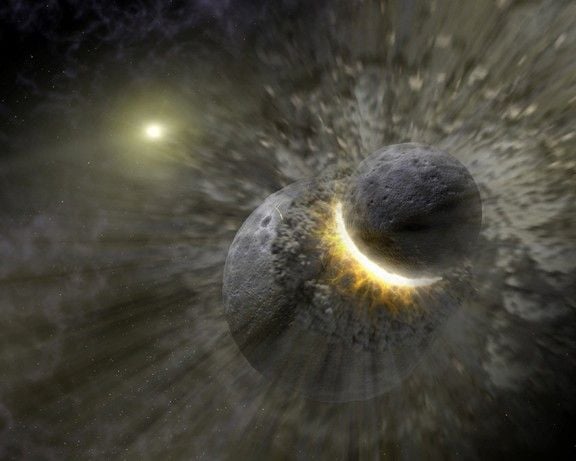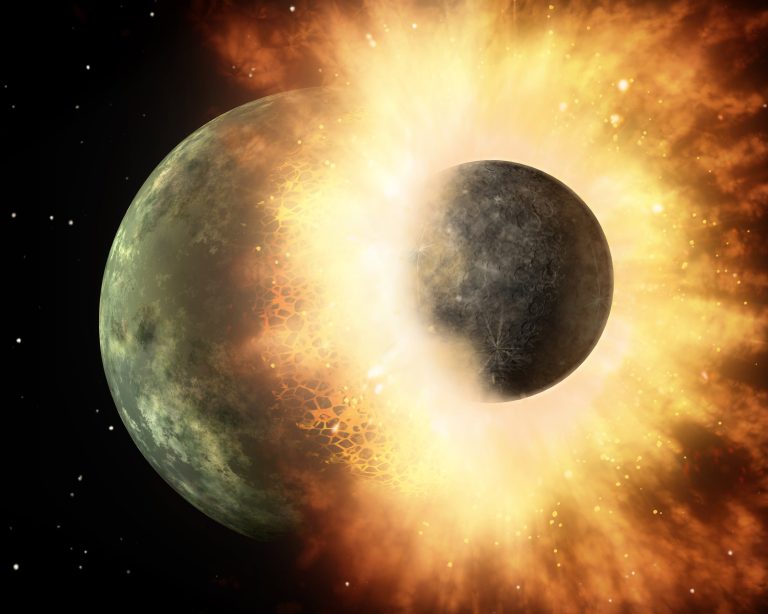New Insights into Lunar Formation: The Moon May Have Formed Earlier Than Believed
Recent studies suggest that the Moon may have formed earlier than previously believed. New geological dating techniques have provided evidence that challenges old models and supports the idea of a rapid and dynamic early solar system. Researchers using isotopic analysis have refined the timeline, hinting that the Moon’s birth occurred shortly after the formation of the Solar System.
Summary
- New research suggests an earlier formation of the Moon
- Studies used rubidium-strontium isotopic dating of lunar rocks
- The Giant Impact Hypothesis remains the main theory of lunar formation
- Revised timeline indicates the Moon formed about 65 ± 21 million years after the Solar System began
- The discovery refines our understanding of early Earth and planetary evolution
- Detailed thermal ionisation mass spectrometry analyses were performed
- Data supports a formation age of approximately 4.502 ± 0.021 billion years
- Findings challenge previous timelines and models
- The research provides valuable insights into the Moon’s composition
- The study enhances our knowledge of planetary impacts and debris coalescence
- Additional sample analyses will improve future models
- For more in-depth information, see the Lunar and Planetary Science Conference paper

Introduction
The Moon has long been a subject of wonder and study. For centuries, people have looked up and marveled at its gentle glow in the night sky. However, modern science reveals that the Moon’s formation is a story of violent collisions and dramatic cosmic events. Recent research has challenged old assumptions and pushed scientists to rethink the timeline of our closest celestial neighbor.
The Giant Impact Hypothesis
One of the most accepted explanations for the Moon’s origin is the Giant Impact Hypothesis. This theory suggests that a Mars-sized body, known as Theia, collided with the early Earth. The collision was so energetic that it ejected large amounts of molten rock and debris into space. Over time, this debris cooled and eventually coalesced into the Moon we see today. The energy from the impact melted parts of both the impactor and Earth, explaining why the Moon’s composition is similar to our planet’s mantle yet lacks a significant iron core.
The hypothesis has gained support over decades of research, but the exact timing of the event has been uncertain. Some estimates place the formation between 4.52 and 4.35 billion years ago. New research, however, suggests that the Moon may have formed earlier than these estimates.
New Evidence from Recent Research
At the Lunar and Planetary Science Conference, scientists presented evidence that has moved the timeline for lunar formation. By applying advanced geological dating techniques, researchers studied the isotopic composition of ancient lunar rocks. One key method involves the radioactive decay of rubidium-87 into strontium-87. These isotopes, found in lunar highland rocks called ferroan anorthosites (FANs), are among the oldest samples available from the Moon.
The research team used thermal ionisation mass spectrometry—a process that heats rock samples to temperatures above 1000°C, causing the atoms to ionise. This method allowed for precise measurements of the isotopic ratios, helping scientists to refine the age of the Moon. Five of the eight samples studied showed consistent strontium ratios, reinforcing the revised timeline.
The new data suggest that the Moon formed approximately 65 ± 21 million years after the formation of the Solar System, pinpointing its age at about 4.502 ± 0.021 billion years ago. This finding has significant implications for our understanding of early planetary evolution.
Research Methods and Findings
Researchers employed several techniques to understand the Moon’s formation. Below is a table that summarizes some of the methods used:
| Method | Purpose | Key Feature |
|---|---|---|
| Thermal Ionisation Mass Spectrometry | To measure isotope ratios in lunar rock samples | High precision through controlled heating |
| Rubidium-Strontium Isotope Dating | To determine the age of lunar rock formations | Uses decay of rubidium-87 to strontium-87 |
| Impact Scenario Modelling | To simulate different collision outcomes | Varies parameters like mass and composition |
Another table provides a simplified timeline based on recent findings:
| Event | Approximate Time (Billion Years Ago) |
|---|---|
| Formation of the Solar System | 4.568 |
| Estimated Time of Theia Impact | ~4.502 |
| Consolidation of Debris into the Moon | Shortly after impact |
Implications for Lunar Science
The revised timeline for lunar formation has far-reaching consequences for the field of planetary science. By narrowing down the window in which the Moon was formed, scientists gain better insights into the conditions present in the early Solar System. These findings also help explain the similar composition between the Earth and the Moon, providing strong evidence that the collision was responsible for both bodies’ current make-up.
This new perspective encourages further research into other celestial bodies. By applying similar techniques to asteroids and other moons, researchers may soon uncover more secrets about the formation of our Solar System. Understanding the Moon’s history not only enriches our knowledge of space but also guides us in the search for life and other planets in the universe.
The discovery that the Moon may have formed earlier than once thought represents a major advancement in our understanding of lunar science. This article has discussed the Giant Impact Hypothesis, the innovative dating methods used by scientists, and the implications of these findings on our view of the early Solar System. With further research, the precise timeline of the Moon’s formation may become even clearer, opening new chapters in our exploration of cosmic history.
New evidence, such as that presented at the Lunar and Planetary science Conference, demonstrates that modern science continues to evolve. With each discovery, we piece together more details about the dynamic events that shaped our celestial neighborhood. The blend of theoretical models and innovative dating techniques not only challenges old paradigms but also reinforces the exciting and ever-changing nature of space exploration.
Facts
-
The Moon is the fifth largest natural satellite in our Solar System.
-
It influences Earth’s tides and has a significant impact on our planet’s environment.
-
Lunar rocks studied for isotopic ratios provide a unique record of early Solar System history.
-
The concept of a giant impact was first proposed in the 1970s and has since evolved.
-
Modern spacecraft continue to gather new data about the Moon’s composition and history.

